🍽️ Food Markets of Barcelona: La Boqueria and Beyond 🏙️
A Culinary Journey Through Barcelona's Diverse Markets
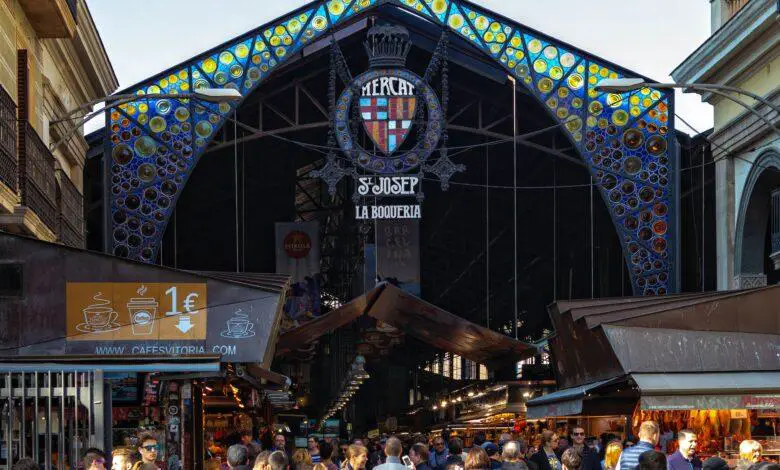
Introduction
Barcelona, the vibrant heart of Catalonia, is a city celebrated for its rich culture and captivating culinary scene. At the core of this gastronomic culture are the food markets, bustling hubs of local life where the freshest ingredients and authentic flavors come together. In this blog post, we invite you to join us on a journey through the food markets of Barcelona, where every stall, every vendor, and every bite tells a story.
Spanning from the world-renowned La Boqueria to hidden gems like Mercat de Sant Caterina and Mercat de Sant Antoni, Barcelona’s food markets offer a tantalizing array of tastes and experiences. They are not just places to shop for ingredients but also vibrant reflections of Catalan culture, where food is a way of life.
So, grab your appetite, let your senses guide you, and embark on a culinary adventure as we explore the food markets of Barcelona and their role in shaping the city’s unique flavor.
La Boqueria Market: The Iconic Food Haven
Description of La Boqueria’s history and importance
Nestled in the heart of Barcelona, La Boqueria Market stands as an iconic food haven with a rich history dating back to 1217. Originally, this bustling market began as an open-air market near the city’s gates, primarily offering meat to locals. Over the centuries, it evolved into a covered market, growing its array of offerings to include fresh produce, seafood, spices, and more.
Today, La Boqueria is a significant landmark, celebrated both by locals and tourists for its historical and culinary importance. It’s a place where tradition and modernity merge, creating a vibrant atmosphere that captures the essence of Spanish culture. The market’s importance lies not only in its historical roots but also in its role as a hub for the city’s gastronomic heritage.
Exploring the vibrant stalls and diversity of offerings
As you step into La Boqueria Market, you’re immediately immersed in a sensory wonderland. Rows of colorful stalls beckon with the aromas of freshly cooked meals, the sights of exotic fruits and vegetables, and the sound of animated chatter. The market is a reflection of the diversity that Barcelona is known for.
Strolling through the market’s narrow alleys, you’ll encounter stalls offering everything from Iberian hams and artisanal cheeses to Mediterranean olives and aromatic spices. The seafood section showcases the day’s catch, with glistening displays of prawns, squid, and octopus. For those with a sweet tooth, the confectionery stalls are a delight, offering delectable pastries, nougat, and churros.
Must-try foods and dishes at La Boqueria
While every corner of La Boqueria Market is a treasure trove of culinary delights, there are some must-try foods and dishes that stand out:
- Fresh Seafood: Start with a plate of freshly grilled sardines or a seafood paella prepared right in front of you. The seafood here is as fresh as it gets.
- Iberian Ham: Sample the finest slices of Iberian ham, known for its exquisite taste and texture. Pair it with a glass of Spanish wine for an authentic experience.
- Empanadas: Try the savory and flaky empanadas filled with a variety of ingredients, from chorizo to vegetables, offering a taste of Spanish tradition.
- Fresh Fruit Smoothies: Cool down with a refreshing fruit smoothie, blending exotic flavors like mango, passion fruit, and dragon fruit.
- Tapas: Many stalls offer an array of tapas, allowing you to savor small bites of Spanish cuisine. Don’t miss the patatas bravas (fried potatoes with a spicy sauce) and the famous Spanish omelette.
La Boqueria Market is more than just a place to shop for groceries; it’s an immersive cultural experience, a culinary adventure, and a historical landmark all rolled into one. Its rich history and vibrant present make it a must-visit destination for anyone exploring the enchanting city of Barcelona.
Beyond La Boqueria: Exploring Other Food Markets
Mercat de Sant Josep de la Boqueria: A local’s alternative
While La Boqueria Market is undoubtedly the most famous food market in Barcelona, those in the know often seek out the Mercat de Sant Josep de la Boqueria as a local’s alternative. Located just a stone’s throw away from La Boqueria, this market is often less crowded, making it an excellent choice for a more authentic and relaxed shopping and dining experience.
The Mercat de Sant Josep de la Boqueria, commonly referred to as the Sant Josep Market, boasts a similar array of fresh produce, seafood, and delicacies, but with a more laid-back vibe. Locals frequent this market to avoid the hustle and bustle of its famous neighbor. Here, you can engage with friendly vendors, sample traditional Catalan dishes, and shop for high-quality ingredients just like the locals do.
Mercat de Santa Caterina: A hidden gem for foodies
For those seeking an off-the-beaten-path culinary adventure, the Mercat de Santa Caterina is a hidden gem that promises a unique and enriching experience. Located in the charming neighborhood of El Born, this market is not as crowded as La Boqueria but offers a delightful mix of fresh products and prepared foods.
One of the highlights of Santa Caterina is its distinctive, undulating, colorful roof, which resembles a dragon’s back. Under this captivating structure, you’ll find stalls brimming with fresh seafood, locally sourced fruits and vegetables, artisanal cheeses, and a variety of international culinary delights. It’s an excellent place to pick up gourmet picnic supplies or try dishes like the popular grilled squid with romesco sauce.
Mercat de Sant Antoni: A blend of tradition and modernity
The Mercat de Sant Antoni is a market that beautifully bridges the gap between tradition and modernity. Located in the lively Sant Antoni neighborhood, this market is a favorite among locals and offers a fusion of classic market stalls and contemporary gourmet options.
This market is renowned for its Sunday morning book market, where you can find vintage books, collectibles, and antiques, creating a unique and vibrant atmosphere. After exploring the book market, don’t forget to visit the food section, where you can savor everything from organic produce to tapas and fresh seafood. It’s a testament to the evolving culinary landscape of Barcelona while paying homage to its rich heritage.
Uncovering lesser-known markets for a unique culinary experience
While La Boqueria is undoubtedly a top destination for food enthusiasts in Barcelona, these lesser-known markets offer a chance to immerse yourself in the local culture and culinary scene. Exploring alternatives like Mercat de Sant Josep de la Boqueria, Mercat de Santa Caterina, and Mercat de Sant Antoni provides a more intimate, less touristy experience, allowing you to discover authentic flavors and engage with friendly locals. So, when you venture beyond La Boqueria, you open the door to a world of diverse and rewarding food markets throughout Barcelona.
The Culinary Culture of Barcelona
How food markets reflect the Catalan way of life
Food markets play a pivotal role in reflecting the Catalan way of life. In Barcelona, these markets are not just places to shop for groceries; they are vibrant hubs of cultural exchange and community life. Markets like La Boqueria, Sant Josep de la Boqueria, and Santa Caterina are where the heartbeat of the city can be felt, and where you’ll truly understand the essence of Catalan culture.
Catalans take their food seriously, and the markets are a testament to their dedication to fresh, high-quality ingredients. It’s a common sight to see locals passionately discussing the quality of produce with vendors, seeking out the best ingredients for their meals. The markets become a stage for this lively exchange of knowledge and culinary traditions.
Moreover, food markets are not just about buying ingredients; they are also places to enjoy a quick meal or tapas, socialize, and savor the flavors of Barcelona. Whether it’s a fresh seafood paella or a plate of jamón ibérico, these markets are where the magic of Catalan cuisine comes to life.
The role of traditional and seasonal ingredients in Catalan cuisine
Catalan cuisine is deeply rooted in tradition and the use of seasonal ingredients. The Catalans have a profound appreciation for local produce, and this reverence for what’s in season is a hallmark of their culinary culture.
From calcots, a type of spring onion, to artichokes, Catalonia celebrates seasonal vegetables by incorporating them into traditional dishes. For example, a popular Catalan dish is “Calçots with Romesco Sauce,” a delight enjoyed during the calcot season, which typically runs from late winter to early spring.
The coastal location of Barcelona also means that seafood is a significant component of Catalan cuisine. Fresh catches like monkfish, cuttlefish, and prawns often take center stage in dishes such as “Suquet de Peix,” a hearty fish stew.
Traditional ingredients like olive oil, garlic, and aromatic herbs are staples in Catalan cooking. These ingredients are used to create rich and flavorful sauces that accompany many dishes. Romesco sauce, made from almonds, roasted red peppers, and garlic, is a perfect example of the type of condiment that adds depth and character to Catalan cuisine.
The art of tapas and social dining in Barcelona
Catalans have elevated the concept of tapas and social dining to an art form. The tradition of sharing small plates with friends and family is deeply ingrained in the culinary culture of Barcelona.
Local bars and restaurants are where the magic of tapas comes alive. From patatas bravas (fried potatoes with spicy tomato sauce) to pimientos de padrón (blistered green peppers), the variety of tapas is vast, offering something for every palate.
What makes tapas even more special is the communal aspect of dining. Sharing these small dishes encourages social interaction, making every meal a shared experience. It’s not just about the food; it’s about coming together, engaging in lively conversations, and savoring the moment. The combination of delicious flavors and the joy of companionship makes dining in Barcelona a memorable experience, and it’s a testament to the warm and welcoming nature of Catalan culture.
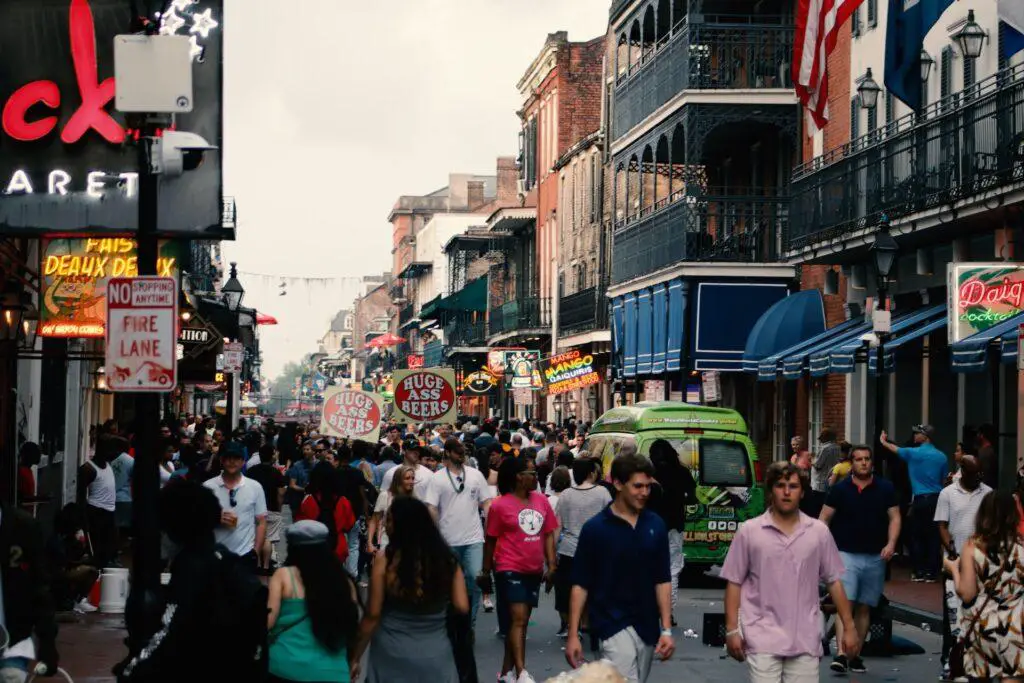
Food Market Tips and Etiquette
Practical advice for navigating Barcelona’s food markets
Navigating Barcelona’s food markets can be an exciting and enriching experience. To make the most of your visit, consider these practical tips:
- Timing is Key: Arrive early in the morning for the freshest produce and a less crowded atmosphere. Many markets open at 8 AM, and it’s the best time to avoid the midday rush.
- Cash is King: While some vendors may accept card payments, it’s a good idea to carry cash with you, especially for small purchases at market stalls.
- BYOB (Bring Your Own Bag): Bring a reusable bag or basket to carry your purchases. This eco-friendly choice is not only practical but also encouraged in many markets.
- Engage with Locals: Don’t hesitate to strike up a conversation with the vendors. They can offer valuable insights, recommend the best items, and even share recipes.
- Taste Before You Buy: Many vendors allow you to sample their products, especially when it comes to cheese, olives, and other foods. Take advantage of this to make informed choices.
- Mind the Market Rules: Be mindful of any specific rules or guidelines posted at the market, such as designated smoking areas, recycling bins, or areas reserved for food consumption.
Respectful behavior when interacting with local vendors
When interacting with local vendors in Barcelona’s food markets, showing respect and courtesy goes a long way:
- Greet Politely: Start your interaction with a friendly “Hola” (hello) and a smile. It sets a positive tone for your interaction.
- Learn Basic Phrases: While many vendors speak English, making an effort to learn a few basic Catalan or Spanish phrases can be greatly appreciated.
- Ask Permission for Photos: If you’d like to take pictures of the market or the vendors’ stalls, ask for their permission first. Some vendors may have concerns about their products or displays being photographed.
- Respect Personal Space: Be mindful of personal space and avoid touching products unless the vendor encourages you to do so.
- Follow Queue Etiquette: If there’s a line at a popular stall, join the queue and wait your turn patiently.
- Barter with Respect: While haggling is not common in Barcelona’s markets, if you wish to negotiate prices, do so with politeness and respect for the vendor’s livelihood.
Sustainability and eco-friendly practices in food markets
Sustainability and eco-friendliness are increasingly important in Barcelona’s food markets:
- Bring Reusable Bags: As mentioned earlier, carrying your own reusable bags or baskets is not only practical but also reduces the need for plastic bags.
- Recycle Responsibly: Look for recycling bins and dispose of your waste thoughtfully. Markets often have separate bins for organic waste, glass, paper, and plastic.
- Support Local and Sustainable: Seek out vendors who promote locally sourced, organic, and sustainable products. This not only benefits the environment but also the local economy.
- Reduce Single-Use Plastics: Avoid single-use plastic cutlery or containers when enjoying food from market stalls. Bring your own reusable utensils if possible.
- Minimize Food Waste: Buy only what you need to reduce food waste. If you have leftovers, consider donating them to local charities or shelters.
By following these tips and practicing respectful and eco-friendly behavior, you can fully enjoy the vibrant food markets of Barcelona while also contributing to a more sustainable and culturally enriching experience.
Gastronomic Souvenirs and Culinary Experiences
Selecting foodie souvenirs to take home
When exploring the gastronomic wonders of a new destination, it’s essential to choose foodie souvenirs that encapsulate the flavors and essence of the place. In Barcelona, this means venturing beyond the typical trinkets and bringing home a taste of its rich culinary culture.
Consider packing your suitcase with:
- Spanish Olive Oil: Known for its exceptional quality and depth of flavor, Spanish olive oil is a staple of Catalan cuisine. Look for a bottle of extra virgin olive oil, which can be drizzled on salads, used for cooking, or simply enjoyed with a piece of crusty bread.
- Pimentón (Smoked Paprika): A key ingredient in many Spanish dishes, smoked paprika adds a distinct flavor to recipes. Bring home a tin of this spice, available in sweet, bittersweet, and hot varieties.
- Saffron Threads: Saffron is a treasured spice in Spanish cooking, particularly in dishes like paella. A small quantity of high-quality saffron threads can go a long way.
- Local Wine: Spain is famous for its wines, and Catalonia is no exception. Choose a bottle of Catalan wine to savor the memories of your trip.
- Turron: A traditional Spanish sweet treat, turron is made with almonds and honey. It’s a delightful and portable gift that represents Spain’s sweet tooth.
Participating in food-related experiences and workshops
To truly immerse yourself in the culinary culture of Barcelona, consider participating in food-related experiences and workshops. These hands-on activities provide insight into the local cuisine and leave you with practical skills and unforgettable memories:
- Cooking Classes: Join a cooking class where you can learn to prepare authentic Spanish dishes like paella, gazpacho, or crema catalana. Expert chefs guide you through the process, sharing their culinary expertise.
- Wine Tasting Tours: Explore the rich world of Spanish wines by taking part in wine tasting tours. Visit local wineries and vineyards to sample an array of wines, including Catalonia’s renowned cava.
- Market Tours: Many tours offer guided visits to food markets like La Boqueria. These tours help you discover the best products, learn about the history of the market, and interact with vendors.
- Olive Oil and Vinegar Tastings: Delve into the world of olive oil and vinegar by participating in tastings. You’ll gain an appreciation for the nuances of flavors and the craftsmanship involved in producing these essential ingredients.
- Chocolate and Dessert Workshops: For those with a sweet tooth, Barcelona offers workshops dedicated to the art of making chocolate, churros, and other delectable desserts.
Experiencing local festivals and events centered around food
Barcelona hosts a variety of festivals and events that revolve around food, providing an opportunity to witness and partake in the city’s culinary traditions:
- La Mercè Festival: Held in late September, this annual festival celebrates Catalan culture. Look out for food-related events, including culinary contests and food truck gatherings.
- Calçotada Festivals: From late winter to early spring, many towns near Barcelona host calçotada festivals. These events revolve around the spring onion called calçots, often accompanied by barbecue feasts and traditional Catalan dancing.
- Festa Major de Gràcia: This neighborhood festival in Gràcia features a competition for the best-decorated streets. Alongside the festivities, you’ll find food stalls offering local specialties and international cuisine.
- Fira de Santa Llúcia: During the Christmas season, this traditional fair takes place in front of the Barcelona Cathedral. It’s an excellent opportunity to shop for local Christmas treats and gifts.
By participating in food-related experiences and attending local festivals, you’ll create unforgettable memories and gain a deeper understanding of Barcelona’s culinary heritage. These activities are not only enjoyable but also provide a profound connection to the heart and soul of the city.
FAQs
Q. What is the best time to visit La Boqueria?
A. The best time to visit La Boqueria is in the morning when it opens. This is when you’ll find the freshest produce and can avoid the crowds that tend to gather later in the day.
Q. Are these markets suitable for vegetarians and vegans?
A. Absolutely! Barcelona’s food markets offer a wide range of vegetarian and vegan options, from fresh produce to prepared dishes. You’ll have no trouble finding delicious meat-free options.
Q. Can I taste local Catalan dishes in these markets?
A. Yes, you can! Many of these markets have bars and restaurants where you can sample authentic Catalan dishes. It’s a great way to immerse yourself in the local culinary culture.
Q. Are the markets open every day of the week?
A. Most markets in Barcelona are open from Monday to Saturday. Some may also have limited hours on Sundays. Be sure to check the specific market’s schedule when planning your visit.
Q. Do I need to bargain when shopping in these markets?
A. No, you generally don’t need to bargain at Barcelona’s food markets. Prices are usually fixed, and the vendors are friendly and fair.
Q. Is there a dress code for visiting these markets?
A. There’s no specific dress code, but it’s a good idea to wear comfortable clothing and shoes since you’ll be doing a fair amount of walking.
Conclusion
As the sun sets over Barcelona, casting a warm, golden glow over the city, it becomes clear that its food markets are more than just places to shop for groceries; they are living, breathing embodiments of the city’s culture and soul. We’ve wandered through the colorful stalls of La Boqueria and ventured beyond to discover the lesser-known markets, each offering a unique culinary experience.
Barcelona’s food markets are an ode to tradition, seasonality, and a love for fresh ingredients. They are a celebration of social dining, tapas, and the simple joy of sharing a meal with friends and family. As you contemplate your next journey, remember that these food markets, with their authentic flavors and vibrant ambiance, await your exploration. Whether you’re a foodie on a quest for the perfect ingredients or a traveler eager to savor the heart of Barcelona, don’t hesitate. The city’s food markets are calling, promising unforgettable tastes and cherished memories in every bite. Get out there, savor the flavors, and create your own culinary story in the heart of Catalonia.
UP NEXT
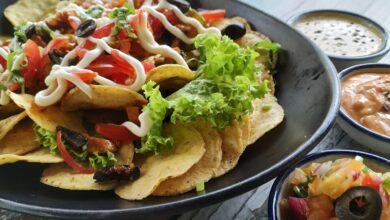
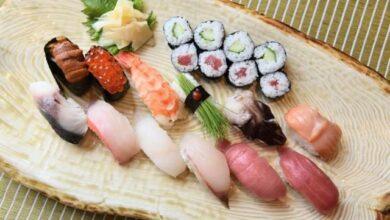
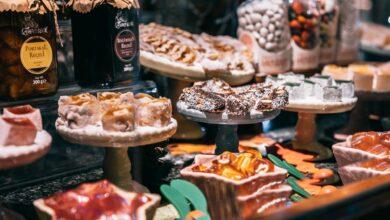
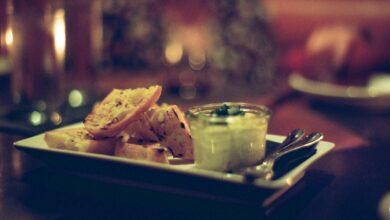
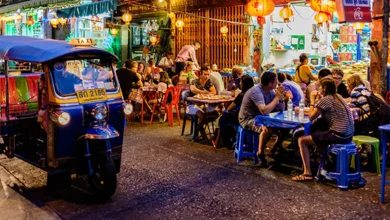
Facebook Comments